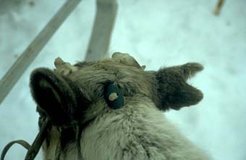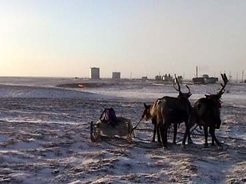Property and Economy among reindeer herders in Yamal, Northwest Siberia
Property and Economy among reindeer herders in Yamal, Northwest Siberia
Preliminary Results

Analysis of the complex field work data shows, that the statistics collected and the perceptions of the herders are broadly consistent. A number of factors seems to determine Yamal’s starting point at the beginning of market-oriented reindeer herding: Yamal throughout the Soviet times had the biggest share in privately owned reindeer, and herders themselves clearly opted for the development of their private herds after the Soviet union.
There is, thus, an uninterrupted history of private herds and herders from Tsarist times up to the present day. As far as land is concerned, the same continuity is observable. Although the Soviets reorganized reindeer herding, the pattern of seasonal migration from Tsarist times up to the present remains largely the same. To continue these patterns, herders clearly opt for common access to pastures that can be flexibly negotiated. This makes the Yamal case interesting in the discourse on mobile pastoralism. Private property with exclusive rights to pastures is seen as a threat to the very existence of reindeer herding.

This view is shared on practically all levels, from the tundra nomad to the President of Russia’s reindeer herders’ association. However, this brings two dangers, first the ‘tragedy of the commons’ described by Hardin (1968). The findings of this research support the well known criticism to Hardin, that common use of pastures does not mean an ‘open-access’ regime, but that use is negotiated within an authorized group of users (cf. Casimir 1992: 8f). Another problem seems to be more dangerous for the ecology of the region than the herders’ system of common pastures with flexibly negotiated usufruct rights. Without officially being registered as land owners, reindeer herding communities are in a weak position in the recent competition with oil and gas companies over land rights. The reaction of the herders and their supporters in the village is the creation of registered clan based communities (obshchiny) that could have a better position in applying for a land title or in negotiations with companies. The foundation of these obshchiny started in regions with resource extraction. The further northwards extraction plans move, the further northwards registrations of obshchiny can be observed. This suggests seeing obshchiny as a means to defend land rights in a situation of growing competition. This supports Dyson-Hudson and Smith’s ‘economic defendability model’, stating that the more scarce and valuable a resource becomes, the more you invest in exclusive control over it.

